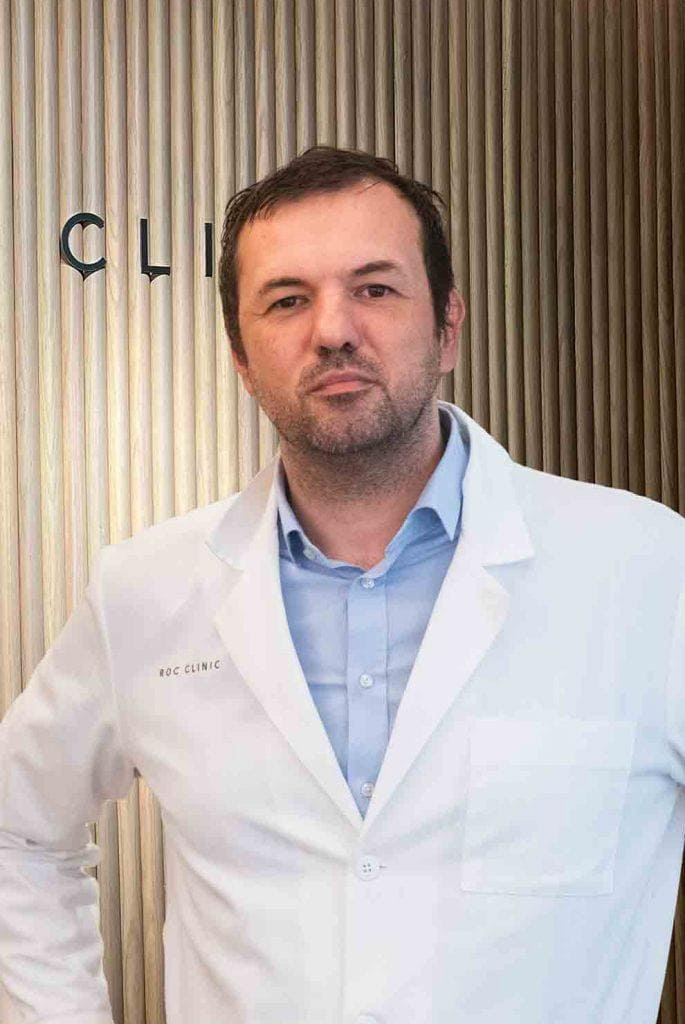Diagnosis Penile Incurvation
The diagnosis of Peyronie's disease is made primarily by physical examination.
Most men experience penile pain or progressive incurvation. In this situation, physical examination usually demonstrates a palpable plaque of fibrosis, often on the dorsal aspect of the penis.
- Super-specialized urologists
- Personalized treatment
- Minimally invasive approach
- More than 16,000 patients successfully treated
Diagnosis of Peyronie's Disease
The diagnosis of Peyronie's disease is usually made based on clinical history and physical examination. Most men report a history of penile pain or progressive incurvation, sometimes related to trauma to the erect penis. In this situation, physical examination usually demonstrates a palpable plaque of fibrosis, most often on the dorsal aspect of the penis.
Other scans that are commonly ordered are:
- Self-photographs (Kelami test), essential to understand the type of curvature and its intensity, and to monitor the response to treatment.
- Doppler ultrasound with prostaglandins makes it possible to objectify fibrosis and penile vascular reserve, especially important in men who are candidates for corporoplasty. This exploration allows studying not only the anatomy of the penis and the presence of direct or indirect symptoms of fibrosis of the corpora cavernosa, but also the functional aspect. In penile Doppler ultrasound with prostaglandins we administer a potent vasodilator -prostaglandin- which forces an erection of the penis, allowing us to see the response of the blood vessels and to analyze possible alterations not only anatomical but also functional at the penile level. It is important to note that prostaglandin ultrasound is not an infallible test and that it also correlates poorly with the presence of incurvation, so we recommend its use only if we are oriented towards the functional study of the penis in erection, rather than its shape.
In general, we usually use questionnaires to establish the quality of erectile function and sexual desire. There are also questionnaires that explore Peyronie's disease. This type of resource is particularly important in the active phase and prior to treatment, in order to have a more or less objective starting point on which to measure the progression of treatment. Traditionally, several complementary scans have been used in the study of Peyornie's, although their usefulness is limited.
In addition, it is important to establish the presence of other fibrosing diseases such as Dupuytren's disease, Ledderhorse's disease and retroperitoneal fibrosis, both in the patient and in the patient's family. We know that these diseases are related to Peyronie's disease and their presence increases the risk of suffering from them. Conversely, the fact of having any of these diseases also increases the risk of having Peyronie's disease. But not only that, the existence of some of these diseases among relatives is related to a significant increase in the risk of developing Peyronie's disease.
One of the first things the physician must determine is whether the disease is in the active or stable phase. The active phase usually lasts 9 to 12 months, and is characterized by penile pain and changes in the penis (which may be more or less incurvation, erection problems, penile shortening or hourglass deformity). One in 20 men with Peyornie's disease will have chronic pain, which is usually not very severe, but exceeds the 12-month limit that most men with active disease usually have.
One point that is important although not usually difficult is the differentiation between penile fibrosis due to Peyronie's disease -which can produce incurvation-, with congenital penile incurvation or combo penis. Combo penis is congenital, and is characterized by penile incurvation from birth of the child, often in the absence of fibrosis or any other symptoms of penile damage.
They ask us in the Consultation
See more questionsTeam of the Penile Incurvation unit
Newsof ROC Clinic in Penile Incurvation
Research
Advances in activation pumps for three-piece penile prostheses: a narrative review


 +34 912 627 104
+34 912 627 104 Contact
Contact









